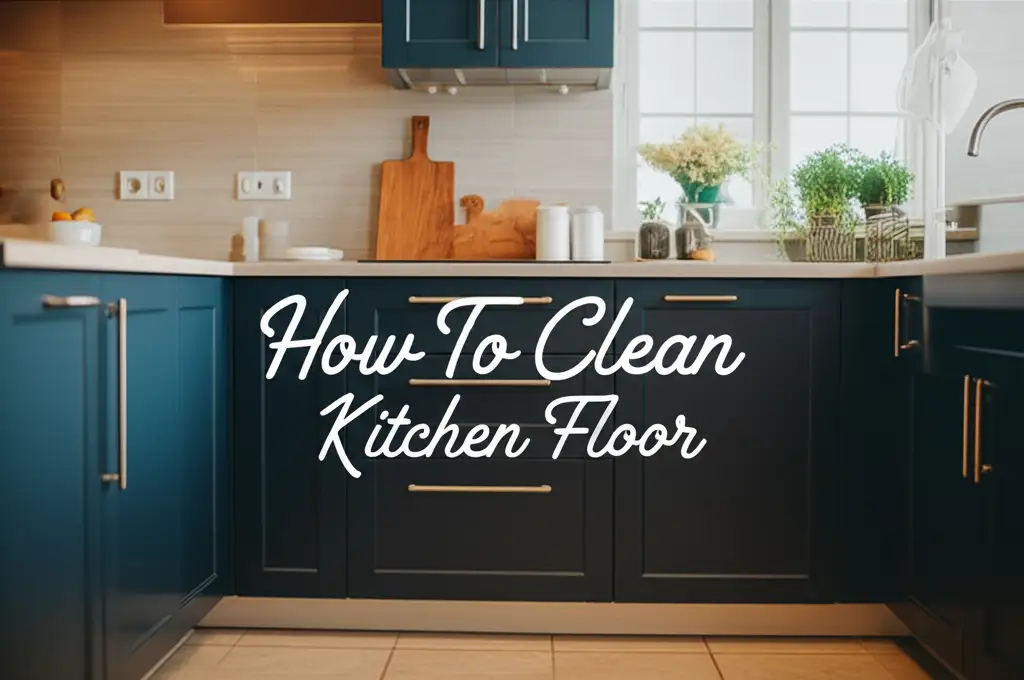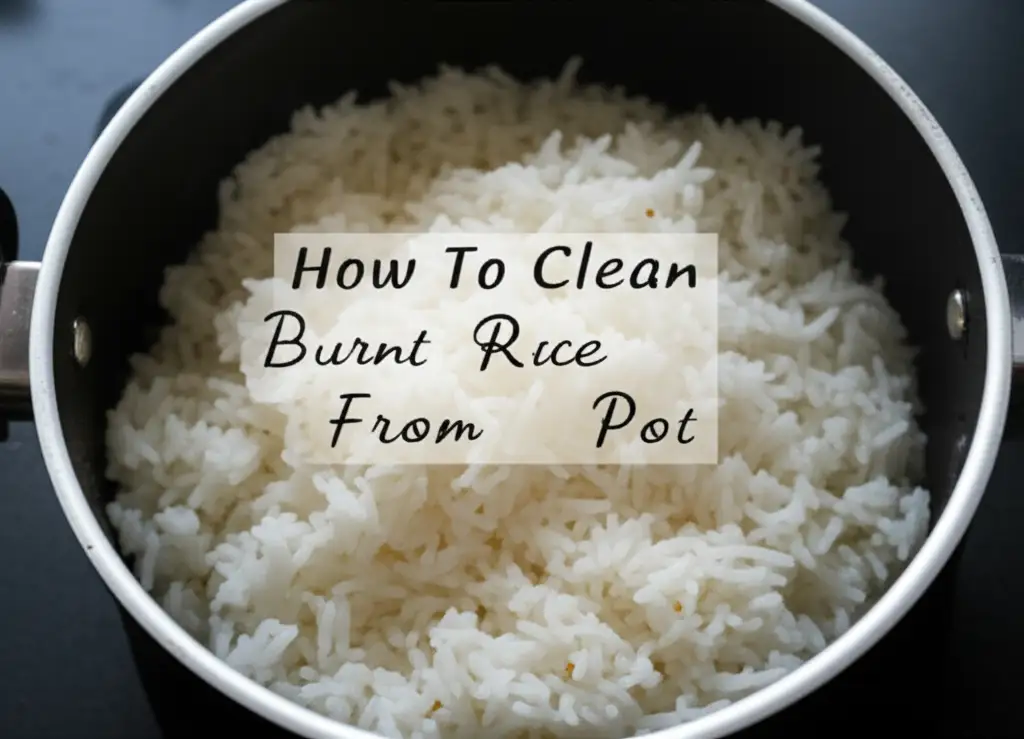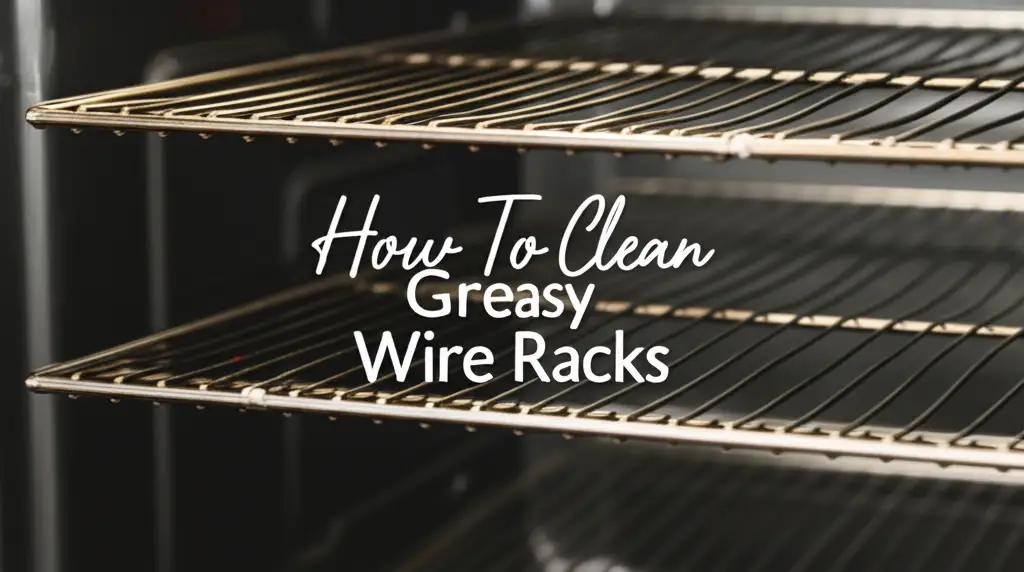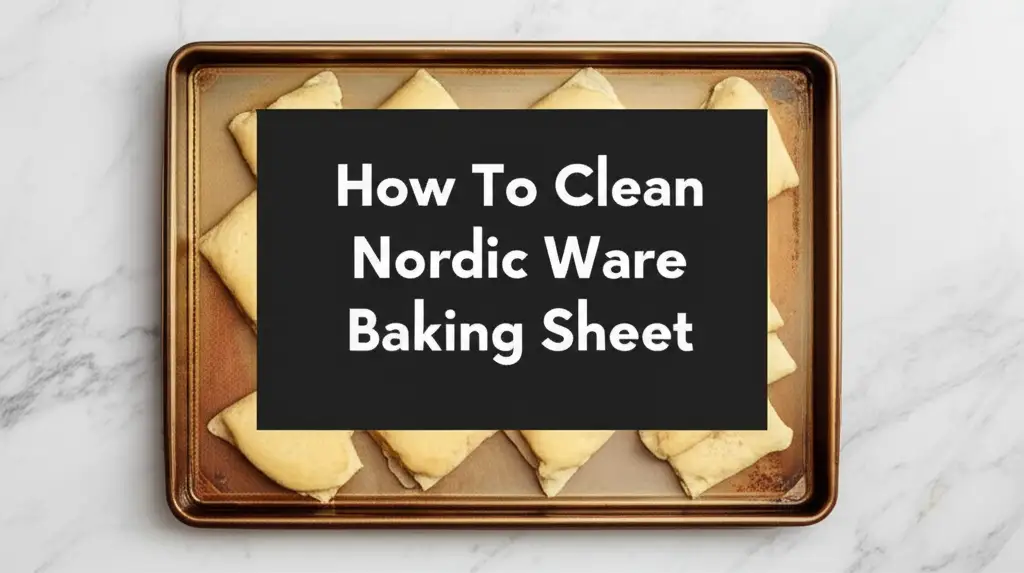· Kitchen Cleaning · 14 min read
How To Clean Kitchen Floor

Mastering How To Clean Kitchen Floor Effectively
Imagine walking into your kitchen. You see sparkling countertops, shiny appliances, and a beautiful backsplash. But then you glance down. Is your kitchen floor truly clean? Our kitchen floors face daily battles. Spills, crumbs, grease, and foot traffic collect on surfaces. A dirty floor takes away from an otherwise clean space. Learning how to clean kitchen floor correctly ensures a hygienic and inviting heart of your home.
This guide helps you master kitchen floor cleaning. We will explore different floor types and their specific cleaning needs. We cover essential tools and solutions. You will learn how to tackle tough stains and maintain shine. This article provides clear steps for a spotless kitchen floor. Let’s make your kitchen truly shine from top to bottom.
Takeaway
Achieving a spotless kitchen floor involves understanding its material and applying the right cleaning methods.
- Identify Floor Type: Different materials like tile, wood, and vinyl need specific care.
- Gather Tools & Solutions: Use appropriate mops, brushes, and cleaners for effective results.
- Pre-Clean Thoroughly: Remove loose debris before wet cleaning to prevent streaks.
- Address Stains Quickly: Tackle spills and grease immediately to prevent setting.
- Maintain Regularly: Daily sweeping and prompt spot cleaning keep floors looking their best.
A clean kitchen floor requires specific steps. First, sweep or vacuum to remove loose dirt. Next, choose a cleaning solution safe for your floor material. Mop or hand-clean the floor. Pay attention to tough spots. Rinse the floor if needed, then let it dry completely. This process removes grime and makes your kitchen floor shine.
Preparing Your Kitchen Floor for a Deep Clean
A proper clean always starts with good preparation. You cannot effectively clean a kitchen floor if it has crumbs, dust, or other debris on it. This first step helps ensure your efforts are not wasted. It makes the actual scrubbing and mopping much more effective. Skipping this part means you might just push dirt around.
Start by removing everything from the floor. This means moving chairs, trash cans, and kitchen mats. Put these items aside so you have a clear workspace. This gives you full access to all areas of the floor. You can then clean under everything, reaching hidden dirt.
Next, sweep or vacuum the entire floor surface. This step removes loose dirt, dust, and food particles. A broom works well for large debris. A vacuum cleaner with a hard floor attachment captures smaller dust and pet hair. Pay special attention to corners and edges. Dirt often collects in these spots. Do this thoroughly before introducing any liquid.
For very sticky or stubborn dry debris, you might need a scraper. Use a plastic scraper to avoid damaging your floor. Gently lift any dried-on food or gum. This pre-cleaning prevents scratches during the wet cleaning phase. It also keeps your mop water cleaner for longer. Proper preparation sets the foundation for a truly clean kitchen floor.
Essential Tools and Cleaning Solutions for Every Floor Type
Having the right tools and solutions makes cleaning your kitchen floor much easier. The type of floor you have will guide your choices. Not every cleaner or tool works for every surface. Using the wrong product can damage your floor. It is important to know what you need before you start.
For general cleaning, you need a good mop. A microfiber mop is excellent for most surfaces. It picks up dirt well and holds water effectively. A sponge mop or string mop also works, but might leave more water behind. You will also need two buckets. One bucket holds your clean solution. The other bucket holds rinse water. This two-bucket method prevents spreading dirty water.
For cleaning solutions, start with mild options. Warm water with a few drops of dish soap is often enough for everyday dirt. For tougher jobs, commercial floor cleaners are available. Always choose a cleaner designed for your specific floor type. Read the label carefully before using any product.
Natural cleaning solutions are also popular. White vinegar mixed with water is a great all-purpose cleaner for many floors. It cuts grease and deodorizes. Baking soda is effective for scrubbing stubborn spots. Avoid using strong chemicals or abrasive scrubbers on delicate surfaces. Always test a new cleaner in a small, hidden area first. This prevents potential damage to your floor’s finish.
Cleaning Specific Kitchen Floor Materials: A Detailed Guide
Kitchen floors come in many materials. Each material needs specific cleaning methods. Knowing your floor type is key to cleaning it properly. Using the wrong method can damage the surface or leave it dull. Let’s look at common kitchen floor types and their best cleaning practices.
How to Clean Tile and Grout Floors
Tile floors are very popular in kitchens. They are durable and water-resistant. Ceramic and porcelain tiles are common. To clean them, start by sweeping or vacuuming. Then, mix warm water with a mild, pH-neutral floor cleaner. You can also use white vinegar and water for general cleaning. Mop the floor, working in small sections. Rinse your mop frequently in clean water.
Grout lines can get very dirty. They absorb spills and grime. For grout, make a paste of baking soda and water. Apply it to the grout lines. Let it sit for 10-15 minutes. Scrub the grout with a stiff brush. An old toothbrush works well for small areas. Rinse the area with clean water. This brings back the clean look of your tile floor.
How to Clean Hardwood Kitchen Floors
Hardwood floors add warmth to a kitchen. However, they need special care. Water is the biggest enemy of hardwood. Excessive moisture can cause warping or dullness. Always use minimal water when cleaning hardwood. Sweep or vacuum first to remove grit. Grit can scratch the wood.
Use a hardwood-specific cleaner. Many brands offer spray cleaners that you apply directly to a microfiber mop pad. Damp mop the floor, not wet mop. Make sure the mop is only slightly damp. Work in sections and dry the floor immediately with a clean, dry cloth. This prevents water spots and moisture damage. Avoid using vinegar, harsh chemicals, or steam cleaners on hardwood floors unless specified by the manufacturer.
How to Clean Laminate Kitchen Floors
Laminate floors mimic the look of wood or stone. They have a durable top layer. Like hardwood, they are sensitive to excess water. Sweep or vacuum regularly. For cleaning, use a damp mop or a laminate floor cleaner. Spray the cleaner directly onto a microfiber mop pad or the floor. Wipe in sections.
Avoid using abrasive cleaners or harsh chemicals. These can damage the protective layer. Never use a wet mop or steam cleaner. Water can seep into the seams and cause swelling or bubbling. If spills happen, wipe them up immediately. Prompt action is best for laminate floors.
How to Clean Vinyl and Linoleum Kitchen Floors
Vinyl and linoleum floors are durable and relatively easy to clean. They are often found in busy kitchens. Start with sweeping or vacuuming. For general cleaning, a mix of warm water and a few drops of dish soap works well. You can also use a mild all-purpose cleaner. Mop the floor, changing your water when it gets dirty.
For stubborn spots, a paste of baking soda and water can help. Gently scrub the spot, then wipe clean. These floors are more water-resistant than wood or laminate. However, avoid flooding the floor with water. Excess water can get under the edges and loosen the adhesive over time. Rinse the floor with clean water if you use a soap-based solution to prevent residue buildup.
Cleaning Natural Stone and Granite Kitchen Floors
Natural stone floors like marble, travertine, or granite add elegance. They require very specific care. Stone is porous and sensitive to acidic cleaners. Vinegar, lemon juice, and harsh chemicals can etch the surface. Always use a pH-neutral cleaner specifically designed for natural stone. Sweep or dust mop daily to prevent grit from scratching the surface. For deep cleaning, use warm water with your stone cleaner. Wipe the floor with a soft cloth or a microfiber mop. Avoid abrasive scrubbers.
Immediately wipe up spills, especially acidic ones like juice or wine. These can stain or etch the stone quickly. Consider sealing natural stone floors annually or bi-annually. Sealing protects the stone from stains and moisture. You can learn more about how to clean your stone floor or how to clean your granite floor for detailed advice. How To Clean Stone Floor and How To Clean Granite Floor can provide specific guidance for these delicate surfaces.
Tackling Stubborn Stains and Grease on Kitchen Floors
Kitchen floors face unique challenges. Spills happen often. Grease drips during cooking. These can lead to stubborn stains that regular mopping might miss. Dealing with these spots requires specific approaches. Act fast when a spill happens to prevent it from setting.
Grease is a common problem in kitchens. It can make floors slippery and dull. For fresh grease spots, sprinkle cornstarch or baking soda on the area. Let it sit for 10-15 minutes. This absorbs the grease. Then, sweep or vacuum up the powder. For set-in grease, mix warm water with a few drops of degreasing dish soap. Apply it to the greasy area. Let it sit for a few minutes. Gently scrub with a soft brush or sponge. Wipe clean with a damp cloth. You can find more specific tips for a particularly greasy floor.
Food stains also vary. For sticky spills like syrup or soda, use warm water and a little dish soap. Wipe the area thoroughly. If it is still sticky, a paste of baking soda and water can help. Apply the paste, let it sit, then scrub and wipe clean. For dried-on food, scrape off as much as you can first. Then apply your cleaning solution. Sometimes, a steam cleaner can loosen tough, dried-on grime effectively.
For other specific stains, consider the stain type. For ink, use rubbing alcohol on a cloth. For scuff marks from shoes, use a pencil eraser or baking soda paste. Always test any strong cleaner in an inconspicuous spot first. This prevents damage to your floor’s finish. A little patience and the right product can remove even the toughest kitchen floor stains. Sometimes, cabinets also get sticky. You can apply similar principles to clean sticky kitchen cabinets if the residue is food-based.
Daily Maintenance and Routine Cleaning for a Sparkling Kitchen Floor
Keeping your kitchen floor clean does not just mean deep cleaning once a month. Daily maintenance is essential. It prevents dirt and grime from building up. Regular care makes your deep cleaning sessions much easier. It also keeps your kitchen looking fresh every day.
Start by sweeping or vacuuming your kitchen floor daily. This removes crumbs, dust, and light debris. Loose particles can scratch your floor if left too long. Pay attention to high-traffic areas and around cooking zones. A quick sweep takes only a few minutes. It makes a big difference in preventing dirt accumulation.
Spot clean spills immediately. Accidents happen in the kitchen. If you spill food or liquid, wipe it up right away. Use a damp cloth and a mild cleaner if needed. Prompt action prevents stains from setting. It also stops sticky residues from attracting more dirt. This simple step saves you effort later.
Using kitchen mats is also helpful. Place mats near the sink, stove, and refrigerator. These areas see the most spills and foot traffic. Mats catch drips and prevent direct wear on your floor. Regularly shake out or clean these mats. You can find useful information on how to clean kitchen mats to keep them fresh.
Damp mop your kitchen floor once or twice a week. Use a cleaner suitable for your floor type. This removes general grime that sweeping misses. Do not over-wet the floor, especially if it is wood or laminate. A consistent routine keeps your kitchen floor consistently clean. It reduces the need for intense scrubbing later.
Advanced Tips and Tricks for a Deeper Clean
Sometimes, your kitchen floor needs more than just routine cleaning. A deeper clean can restore its shine and hygiene. These advanced tips go beyond the basics. They help you tackle hidden grime and protect your floor’s longevity. Use these methods periodically for best results.
Consider using a steam mop for a deeper clean on tile, vinyl, or linoleum. Steam mops use hot vapor to sanitize and loosen dirt. They often do not require chemical cleaners. This makes them a great option for an eco-friendly clean. Always check if your floor type is safe for steam cleaning. Some floors, like unsealed hardwood or laminate, can be damaged by steam.
For areas with heavy buildup, you might need specialized tools. A grout brush is essential for tile floors. It reaches into those tough grout lines. For deeply embedded dirt, a professional-grade floor scrubber can be rented. These machines offer powerful cleaning action. They can revitalize even very dirty floors.
Applying a floor polish or sealant can protect your floor after a deep clean. This is especially true for stone or older vinyl floors. Polish adds a protective layer and a beautiful shine. Sealants for natural stone prevent stains and moisture penetration. Always choose products compatible with your specific floor material. Follow product instructions carefully for the best outcome.
Explore alternative cleaning methods for specific situations. If you need to clean your floor without a traditional mop, there are options. For example, using spray cleaners with microfiber cloths or specialty floor wipes can work for quick touch-ups. Learn more about how to clean a floor without a mop for unique approaches. These advanced techniques ensure your kitchen floor remains spotless and well-maintained.
Troubleshooting Common Kitchen Floor Cleaning Problems
Even with the best intentions, kitchen floor cleaning can present challenges. You might encounter streaks, dullness, or lingering odors. Knowing how to troubleshoot these common issues helps you achieve a truly clean result. Do not give up if your floor does not look perfect immediately.
One common problem is streaks after mopping. Streaks often happen for a few reasons. You might be using too much cleaning solution. Excess soap leaves a residue. It can also happen if your mop water is dirty. Always rinse your mop in clean water frequently. Try using less cleaner or rinsing the floor with clear water after cleaning. Sometimes, the mop head itself might be dirty. Ensure your mop head is clean before you start.
Dullness is another issue. If your floor looks dull even after cleaning, it could be residue buildup. Many commercial cleaners leave a film over time. Try a deep rinse with plain warm water. For some floors, a solution of white vinegar and water can remove residue. If the dullness is permanent, the floor’s finish might be worn. In this case, re-polishing or re-sealing might be necessary.
Lingering odors can come from food spills or pet accidents. Even after cleaning, a faint smell might remain. For organic odors, an enzyme cleaner works well. It breaks down odor-causing molecules. Baking soda sprinkled on the floor overnight also absorbs odors. Vacuum it up the next morning. Ensure the source of the odor is completely removed.
Scratches and scuffs are common in high-traffic kitchens. For minor scuffs, a tennis ball or a pencil eraser can often buff them out. For deeper scratches on wood or laminate, touch-up kits are available. Prevention is key here. Use floor protectors under furniture. Also, use floor mats in heavy-use areas to reduce wear and tear.
Conclusion
Cleaning your kitchen floor can feel like a big job. But it does not have to be overwhelming. We have explored the proper steps for a spotless kitchen floor. We looked at preparing the area first. We discussed choosing the right tools and solutions for different floor types. We covered how to tackle tough grease and stains. We also provided tips for daily maintenance and advanced cleaning. Finally, we addressed common problems you might face.
Remember, a clean kitchen floor makes your entire home feel better. It boosts hygiene and creates a welcoming atmosphere. By following these practical steps, you can keep your kitchen floor looking its best. Do not be afraid to get started today. Choose the right method for your floor type. Gather your cleaning supplies. Start your journey to a sparkling clean kitchen floor. Your kitchen will thank you for it!
- kitchen floor cleaning
- floor care
- cleaning tips




